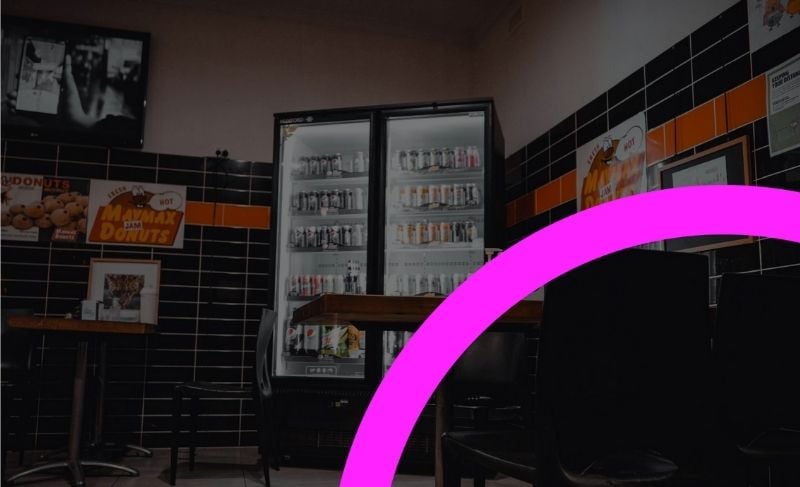The ultimate measurement of your political campaign’s success will obviously be determined at the ballot box. However, just as the trend-watchers on your team track evolving voter sentiment as the election season unfolds, you can measure the impact of your out-of-home advertising in real time, too.
That gives you valuable additional insight to tweak your audience targeting, messaging, location placements, programmatic display parameters or the types of OOH platforms you’re using.
It helps to know that 65% of American adults get at least some of their political information using digital channels, including digital OOH.
You can also effectively evaluate out-of-home ROI, a fact that should make your finance manager smile.
One reason political marketers consider traditional OOH essential is that you get all ad, all the time – 100% view ability 24/7 without clutter or interruption. These ads have the power to boost ROI of search advertising by 40%.
That’s because OOH is more efficient than any traditional advertising medium and also web-based banner ads when it comes to driving online interaction.
Measuring OOH impact
Just as with any marketing plan, you will need to develop key performance indicators — benchmarks that measure progress toward your overall campaign goals as well as specific objectives assigned to advertising campaigns and other marketing efforts (canvassing, lawn sign distribution, etc.).
Common campaign goals include:
- Money raised (and number of donors)
- Number of volunteers
- Voter engagement
- Increase in polling position
With your goals in mind, you will then need to identify metrics to assess each of your OOH campaign KPIs such as impressions, engagement, social shares, fundraising, etc.
Don’t you wish you could get right inside their heads to see what voters are really thinking and feeling? Turns out researchers have been doing that, and what they’ve learned can help you improve targeting and messaging.
Who saw your ad?
OOH advertisers are moving toward measuring impressions rather than exposures. The reason is simple — digital advertising is measured in impressions and using a similar system makes it easier to compare performance across all channels.
Impressions reflect how many people will have the opportunity to see your ad as they walk or drive by. Estimates are derived using a variety of data sources and are generally considered quite accurate. In a recent nationwide survey of marketers, 96% said they have confidence in their OOH results and 75% said they’re confident in their DOOH results.
Digital billboards and other DOOH screens use proximity-detection and other types of technology to track impressions in real time.
Impressions are good, but taking action is better
Successful election campaign managers excel at data gathering, leverage and measurement.
With OOH, you can measure the type and level of interaction your ad generates. You can track impressions and voter engagement using the key metrics you’ve identified for specific ad campaigns or your overall strategic plan, typically things such as:
- GPS
- Wi-Fi-powered beacons
- QR codes
- Promo codes
- Hashtags
- Web links
- Surveys
- Social media impact
- Volunteer signups
- Event registrations
- Financial contributions
Geo-based technology has transformed OOH targeting and measurement, allowing for highly detailed placement selection and contextual content creation. Geofencing sets parameters for ad display and uses proximity detection to identify audiences that are within that space and engaging with your ad.
Once the viewer converts by engaging with you, you can retarget digital ads to their mobile device. Then you can measure any further engagement using other data analysis tools.
Measuring OOH performance provides insight into how well out-of-home is performing and how it is contributing to your overall advertising results. You can measure:
-
Attribution
With multiple OOH platforms and messages in play you need to know which ones are getting the job done well. Location data allows you to track the number and frequency of impressions for each static and digital ad unit.
-
Lift analysis
Integrating OOH into omnichannel marketing creates a rising tide that lifts overall results. Lift analysis shows how much lift OOH is contributing to each of the metrics you’ve assigned to that ad campaign (engagement, sign-ups, etc.).
-
Halo effect
OOH can not only increase effectiveness of a particular campaign, it creates a “halo effect” that represents a broader benefit to marketers by helping to increase brand recognition, loyalty and further engagement. In that way, the expanded reach and frequency of OOH can indirectly boost performance of all your digital ads (and other marketing efforts). In some cases, location-based tracking can show how much lift you’re getting from this halo effect.
OneScreen.ai makes it easy to track, analyze and optimize your OOH advertising campaigns using our PLACERANK™ algorithm. And it’s free. More kudos from your finance manager.
Before you have something to track and measure, though, you need to understand all the ways in which OOH can benefit your campaign and how to put all those tools to work. Our political advertising playbook collection is your guide.
